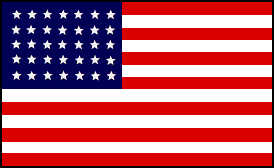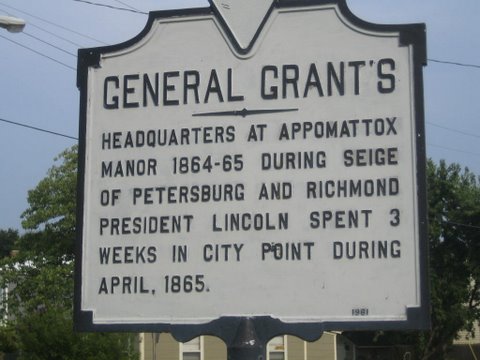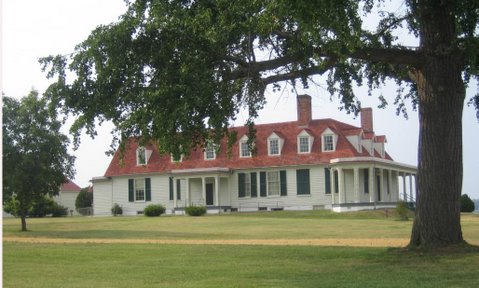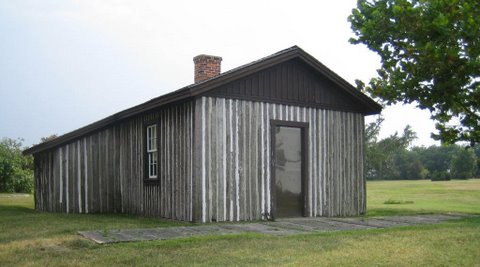 |

|

| The 93rd P.V.I. spent a cumulative total of about four months in the area of Petersburg, Virginia during their two visits.
Following is a summary of their service in this area along with photos taken in July 2007.
This information and photos are courtesy of William C. Busby
More to be added in the near future... Gen. Grant finding that his orders to take Petersburg by surprise had not (been) carried out by Gen. Smith on the 16th, prepared for an investment of it. The Sixth Corps was ordered to the left and south of Petersburg. On the 21st the Sixth Corps with the Second Corps, marched in rear of the rest of the army, along the Jerusalem plank road, while the cavalry Divisions of Wilson and Kautz were ordered to cut the Welden railroad and march across the country and destroy the South Side railroad. Gen. Wright, of our Sixth Corps was ordered to move independent of the rest of the Army, and to secure if possible a strong position on Gen. Lee’s right and attack if he thought proper. Gen. Birney in command of the Second Corps was ordered forward so as to press upon the flank of the enemy. The Sixth Corps met the Rebels after advancing a mile, in front of our Third Division, and a sharp skirmish occurred. The Second Corps was forced back and our Sixth Corps was also ordered to retire, and the Rebels succeeded in capturing a battery from the Second Corps and more than 2,000 prisoners. The loss to the Sixth Corps was about six hundred men. The responsibility for this surprise was with Gen. Birney, of the Second Corps, for Gen. Wright, of the Sixth Corps, being entirely independent of any advance of that Corps, had of course made no disposition to keep the line intact. The Corps remained quiet until June 29th, when on the afternoon of that day our Sixth Corps was ordered to march to Ream’s Station. The march was taken up at 4 o’clock and after a march of all night reached the Station, and at once commenced tearing up the track and burning the ties. After completing the work the corps retraced its steps and that night reached a point of two and one-half miles of the position we had left the day before. We bivouacked along Jerusalem Plank Road and next morning resumed our old position with the army before Petersburg. The fourth of July was spent in Camp with patriotic demonstrations. On July 9th the Sixth Corps, First and Second Divisions, were ordered to march to City Point at once. The Third Division had left on July 1st for Baltimore, marched toward Frederick, Maryland, where the Rebels were encountered on the banks of the Monacacy, and were driven back by Gen. Early’s forces, which greatly outnumbered the Third Division of the Sixth Corps, and some green troops, collected at Baltimore, all under Gen. Wallace. Although defeated, they succeeded in arresting the progress of the invasion until the remainder of the Sixth Corps reached Washington in advance of the Rebels. Our march to City Point was entered upon at nine o’clock on the evening of the 9th and the march of fourteen miles was made during night time, and thus escaped the heat of the day, as the roads were knee deep with dust, filling the throat, eyes and nostrils of the men. We reached City Point, on the James River, at daylight, and before noon both divisions were on board transports, which were in readiness upon arrival. The men were in excellent spirits as the order was received that our destination was Washington.1
|
| Following are photos of the Petersburg and City Point (Hopewell) area: |
 Grant's Plaque |
 Appomattox Manor |
 Grant’s Cabin at City Point
|
Also see National Park Service links: http://www.nps.gov/archive/pete/mahan/eduhistcp.html and http://www.nps.gov/history/nr/travel/jamesriver/app.htm Ream’s Station was located in Dinwiddie County, which is southwest of Petersburg. This was in the general area of Fort Fisher. After service in Washington, the Shenandoah Valley and Philadelphia, the 93rd P.V.I. returned to the Petersburg area, near Fort Fisher, in December 1864. This would be their home for almost four months, until April 1865 when they joined in the pursuit of Lee’s Army westward after he abandoned Richmond. Lee surrendered at Appomattox Court House April 9, 1865. The Sixth Corps was ordered to return to the Army of the Potomac on December 9th, 1864 and upon arrival at City Point, marched southward and as the lines had been extended farther west and south from a little beyond Jerusalem Plank Road, across the Weldon Railroad, and reached Hatcher’s Run, eight miles from our former position; the Regiment was thrown along the lines of the of the Fifth Corps, and brought us near Globe Tavern at the Weldon Railroad. Some regiments of the Corps, marched into winter quarters already prepared, but the 93rd was not so fortunate, and work was at once commenced among the plentiful timber to erect such and in a short time the 93rd boys, adept with the axe and experience was soon credited with having the best and handsomest quarters in the division. After the finishing of the quarters for officers and men the “boys” erected a fine chapel for the use of Rev. J. S. Lame, Chaplain of the 93rd, where preaching and song services were held regularly during the winter. At this time a large number of drafted men were assigned to the Regiment, which were distributed to the different companies and which for the third time refilled the Regiment with new men, and full complement of officers for the spring campaign.2 Near the end of the time that the 93rd’s was posted in this area, they were involved in a major battle on March 25, 1865, “immediately in front of our Fort Fisher”3. This was one of a string of battles attempting to penetrate Confederate lines and end the siege of Petersburg and Richmond. In his book, Breaking the Backbone of the Rebellion The Final Battles of The Petersburg Campaign, author A. Wilson Greene refers to this as The Second Battle of Jones’s Farm.4 Gen. Meade at the same time ordered the Sixth Corps to advance on the left, and the three Brigades of our Second Division, were sent forward to take and hold the Rebel picket line near the Squirrel Level road, for the double purpose of withdrawing the attention of the Rebels, and of advancing our lines for future operations. The charge was made, the Rebel picket line was driven in and upon reaching a high point overlooking the breastworks the Division was met with withering fire from nine pieces of artillery, but the line went forward up to the very works and was held, although the Division was occupying an open space, without any shelter, and at an immense loss, until and aid-de-camp swiftly passed along the line and ordered a withdrawal. The Division slowly retired, bringing all the wounded within the lines, and rested under the cover of the elevated point, while the Rebels were pouring solid shot and shell into our ranks. One shell exploded above the Regiment and caused the deaths of a number of men. The charge was made early in the afternoon, immediately in front of our Fort Fisher, and was made with a rush, and the taking of a large number of prisoners. “It was the this capture of the intrenched picket line of the Rebels (by our Second Division), says General Humphreys in his ‘Virginia Campaign of ’64 and ’65;’ that made it practicable for General Wright, Commanding the Sixth Corps, to carry the enemy’s main line of intrenchments by assault on the morning of the 2nd of April.” . . . This was one of the most desperate charges the 93rd had been engaged in; for the entire charge, from the time the rifle pits of the Rebels had been taken, the second line of the Rebels captured, and to the very breastworks, was over an open plain. The loss to the 93rd was particularly severe, and were, as far as known, as follows: . . . Killed, 15; Wounded, 136; total, 151.5 Today, a large manufacturing facility owned by Chaparral Steel Company occupies the battlefield, which is just north and east of the Fort Fisher site. Fort Fisher is owned and maintained by the National Park Service. Until recently, it was completely overgrown by trees and brush. Following are photos of Fort Fisher as it is today. Pamplin Historical Park & The Museum of the Civil War Soldier and the Breakthrough battlefield of April 2, 1865 are nearby. These are first class operations. |
|
|

Fort Fisher from south end of diagonal berms (Labels for NE and NW corners of Fort added) |
